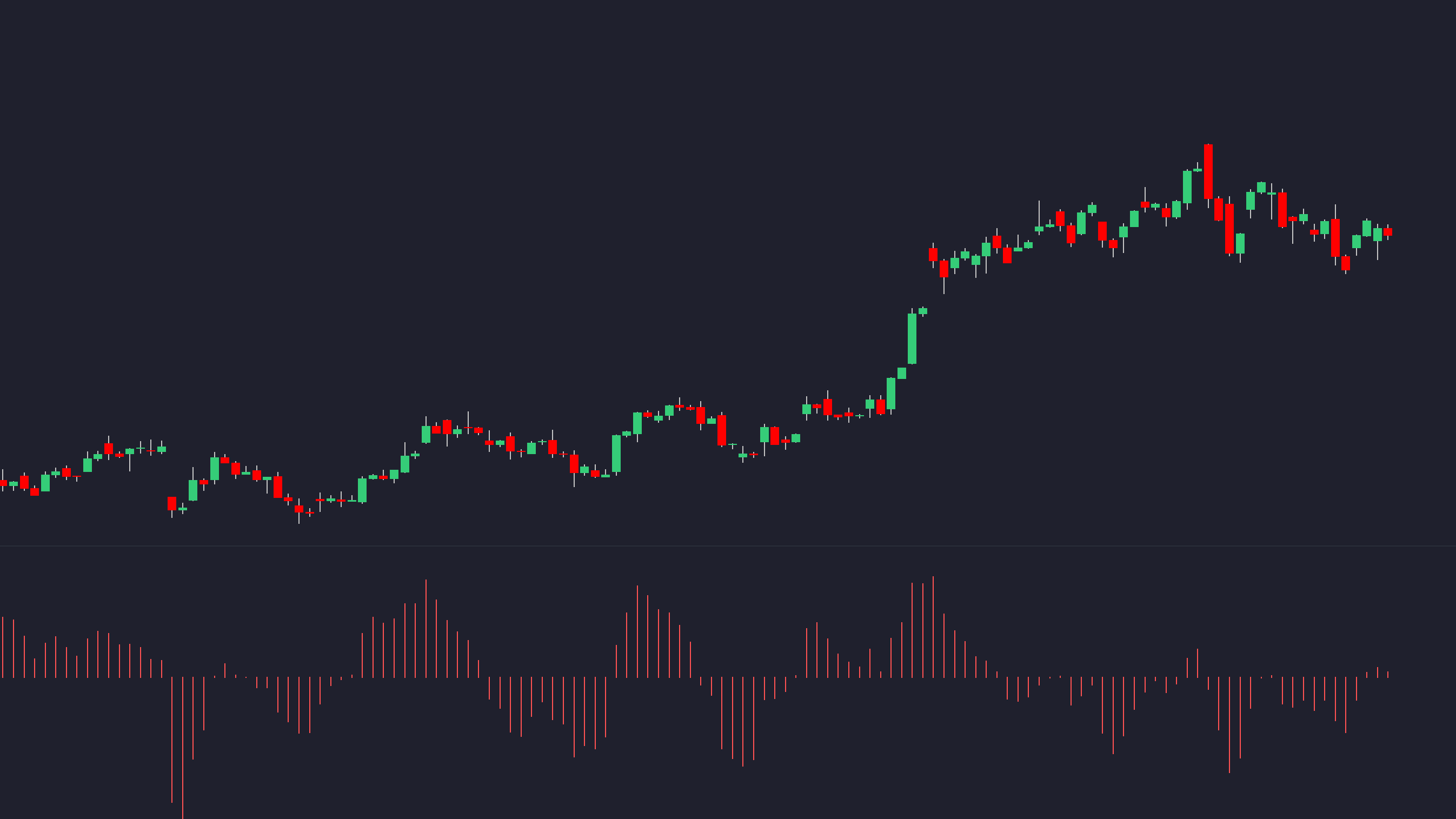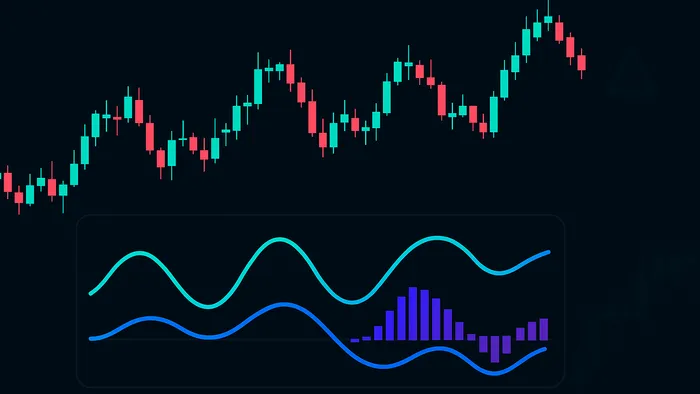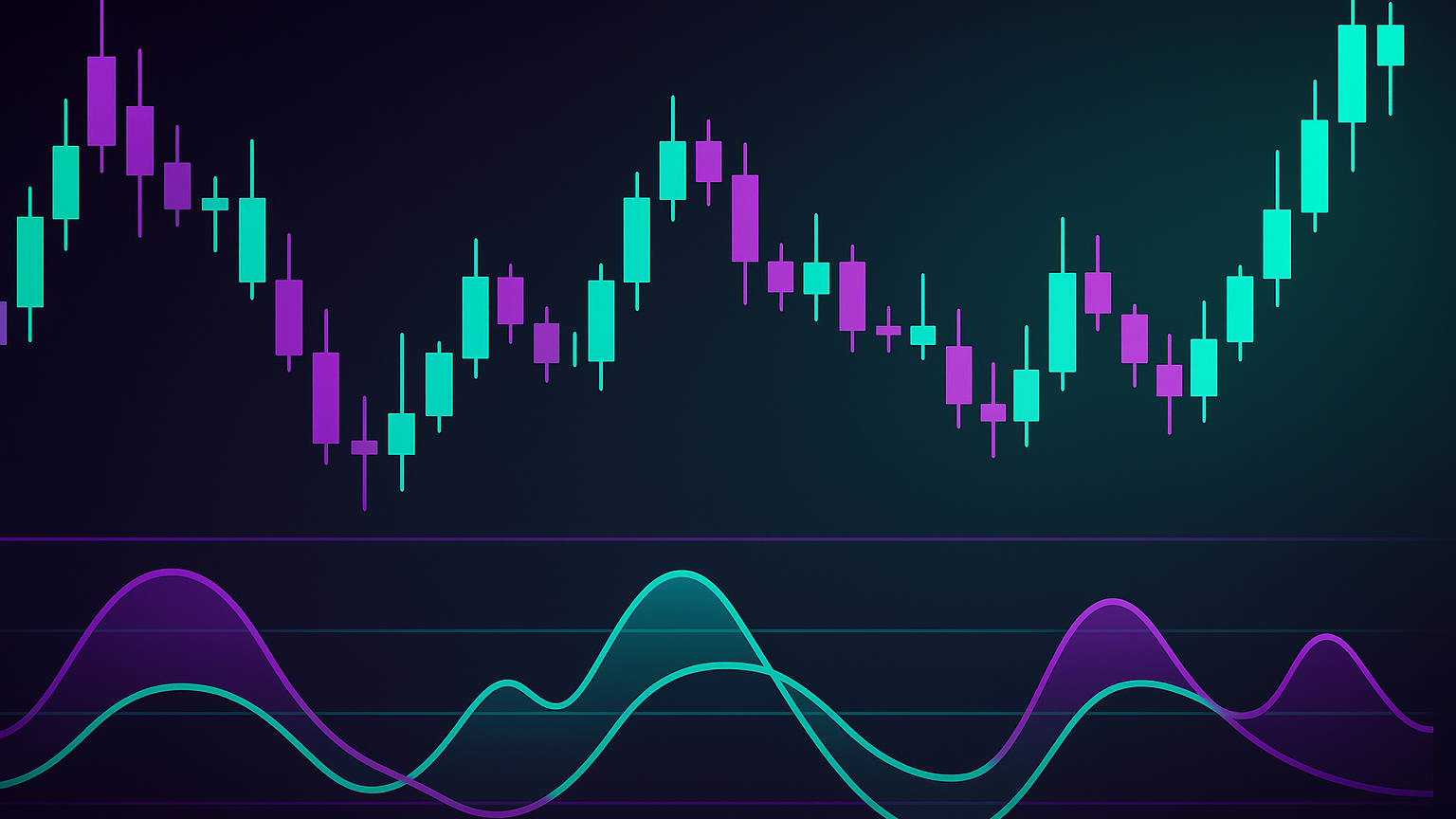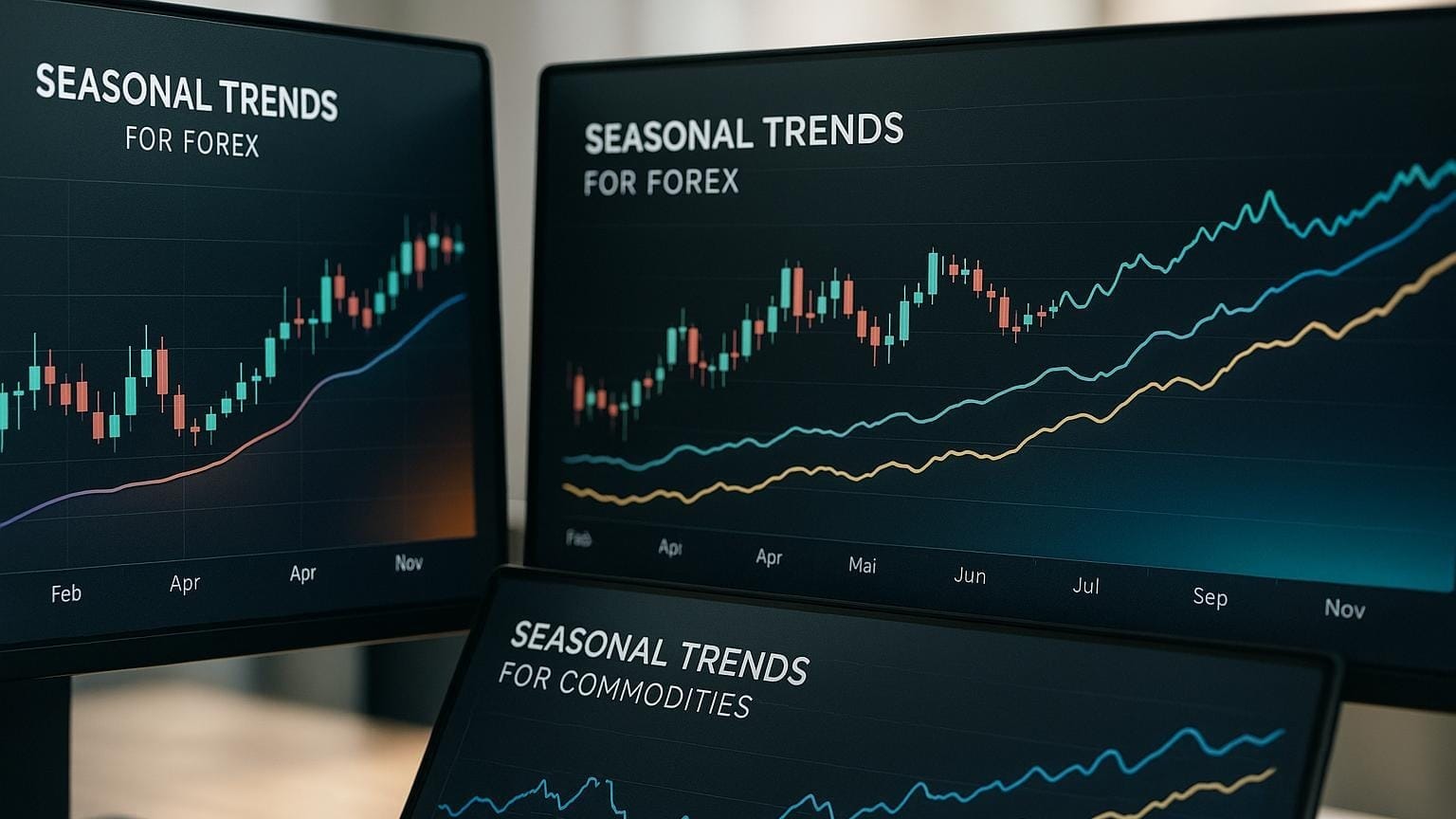Explore the differences between the SMI Ergodic Indicator and Oscillator, their formulas, uses, and how to optimize them for trading strategies.
The SMI Ergodic Indicator and SMI Ergodic Oscillator are tools used in technical analysis to identify market momentum and potential trading opportunities. While both are derived from the Stochastic Momentum Index (SMI), they differ in how they display data and their best use cases:
- SMI Ergodic Indicator: Uses two lines (SMI Line and Signal Line) to analyze momentum shifts. It's ideal for trend-following strategies and provides smoother, more stable signals, making it better suited for trending markets.
- SMI Ergodic Oscillator: Displays a histogram that highlights the difference between the SMI Line and Signal Line. Its higher sensitivity makes it useful for detecting rapid momentum changes, especially in short-term or volatile market conditions.
Quick Comparison
| Feature | SMI Ergodic Indicator | SMI Ergodic Oscillator |
|---|---|---|
| Visualization | Two lines | Histogram |
| Signal Type | Line crossovers | Zero-line crossovers |
| Sensitivity | Lower (smoother) | Higher (more reactive) |
| Best For | Trend-following | Momentum trading |
| False Signal Risk | Lower in trends | Higher in choppy markets |
For beginners, the Indicator is easier for understanding trends, while the Oscillator is better for quick momentum shifts. Experienced traders often combine both tools to refine their strategies. LuxAlgo provides implementations on TradingView that include real-time divergence detection and AI-driven backtesting to support more effective decision-making.
How to Make Money with SMI Ergodic Indicator and Oscillator!
SMI Ergodic Indicator: Formula and How to Use It
The SMI Ergodic Indicator refines the Stochastic Momentum Index (SMI) to provide sharper insights into market momentum. By breaking down its formula and practical use, traders can better integrate this tool into their technical analysis and improve their market timing strategies.
SMI Ergodic Indicator Formula and Components
The SMI Ergodic Indicator is built around two key elements: the main SMI line and the signal line. These work together to highlight momentum shifts and potential trading opportunities.
- The main SMI line represents the core momentum calculation, derived from the difference between the current closing price and a previous closing price over a set period. This value is then double-smoothed using exponential moving averages (EMA) to minimize market noise and provide clearer signals.
- The signal line is a smoothed version of the SMI line, calculated using another exponential moving average. It helps traders spot directional changes in momentum and serves as a trigger for potential entry or exit points.
The SMI line typically oscillates between -100 and +100, providing a normalized view of momentum. The signal line follows closely, offering a secondary layer of analysis to confirm or refine trading decisions.
How to Use the SMI Ergodic Indicator
The SMI Ergodic Indicator is a powerful tool for identifying momentum shifts and potential trend changes before they become evident in price movements. Here’s how traders commonly use it:
- Signal Line Crossovers: When the SMI line crosses above the signal line, it often indicates strengthening upward momentum. Conversely, when it dips below the signal line, it may suggest momentum is weakening or that downward pressure is building.
- Zero Line Reference: Values above zero generally point to bullish momentum, while values below zero suggest bearish conditions. However, the direction and slope of the lines often provide more actionable insights than their position relative to zero.
- Divergences: If the price makes new highs while the SMI fails to do so, it could signal weakening momentum and a potential reversal. Similarly, bullish divergences occur when the price makes new lows, but the SMI does not confirm with lower lows.
For most traders, the default settings — Long Length = 20, Short Length = 5, Signal Line = 5 — strike a balance between responsiveness and smoothness. However, these can be adjusted to suit different timeframes or trading styles.
SMI Ergodic Indicator on Trading Platforms
Most trading platforms, such as TradingView, display the SMI Ergodic Indicator in a separate window below the main price chart. The indicator is typically shown as two distinct lines in different colors, making it easy to identify crossovers and divergences at a glance.
- Visual Features: Platforms often include horizontal reference lines at key levels, such as zero, to help traders quickly gauge momentum. Some also add a histogram, which highlights the difference between the SMI line and the signal line, offering another visual cue for momentum changes.
- Customization Options: Traders can personalize the indicator’s appearance by adjusting colors, line thickness, and background shading. Many prefer to emphasize the zero line or include additional levels, like +40 and -40, to identify overbought or oversold conditions.
- Real-Time Updates: During market hours, the indicator updates in real time, reflecting the latest price data. While this allows traders to monitor shifts as they happen, it’s generally wise to wait for candle closes before acting on signals.
On U.S.-based platforms, time zones typically default to Eastern Time (ET), aligning with standard U.S. trading hours. This ensures that daily, weekly, and monthly calculations match the timing of major market sessions.
SMI Ergodic Oscillator: Formula and How to Use It
Building on the SMI Ergodic Indicator, let's dive into its oscillator version and how it can be applied effectively. The SMI Ergodic Oscillator transforms the indicator's two-line structure into an easy-to-read histogram, offering a clear visual representation of momentum changes.

How the SMI Ergodic Oscillator Works
The SMI Ergodic Oscillator uses a histogram to show the difference between the SMI Line and its Signal Line, oscillating around zero. This format simplifies spotting shifts in momentum. The SMI Line is calculated with the formula:
SMI = (PCDS / APCDS) * 100
Here, PCDS stands for Price Close Double Smoothed, and APCDS is the Absolute Price Close Double Smoothed. Both are derived using exponential moving averages. For a primer on how EMAs weight recent prices more heavily than older ones, see the EMA background.
- Bars above zero represent bullish momentum.
- Bars below zero point to bearish conditions.
This histogram approach makes it easier to visually interpret momentum changes and act accordingly.
When to Use the SMI Ergodic Oscillator
The oscillator is particularly helpful when quick recognition of momentum shifts is crucial for trading decisions. In trending markets, a histogram crossover above zero confirms bullish momentum, while a move below zero signals bearish sentiment.
It also proves valuable during pullbacks within a larger trend. For example, in an uptrend, if the histogram dips below zero, it may signal a temporary correction. A subsequent return above zero could confirm the continuation of the main trend. In range-bound markets, the oscillator’s crossovers can aid in pinpointing entry and exit points near support or resistance levels.
That said, its high sensitivity can lead to frequent crossovers in choppy or sideways markets, which might result in false signals. Traders should consider this when interpreting the oscillator in such conditions.
SMI Indicator vs SMI Ergodic Oscillator: Main Differences
For traders, understanding the differences between the SMI Ergodic Indicator and the SMI Ergodic Oscillator is crucial when deciding which tool to use in specific market scenarios. While both are mathematically related, they serve different purposes in technical analysis.
Side-by-Side Comparison
The primary distinction lies in how each tool presents data. The SMI Ergodic Indicator uses two lines — the SMI Line and the Signal Line — that traders analyze by observing crossovers and their relative positions. Meanwhile, the SMI Ergodic Oscillator simplifies this relationship into a histogram, where bars above and below the zero line represent the difference between the two lines.
- The indicator relies on line crossovers, offering smoother but slower signals.
- The oscillator, on the other hand, uses zero-line crossovers, making it more responsive but also more volatile, especially in unpredictable markets.
In terms of application, the indicator is better suited for confirming trends and assessing their strength, making it ideal for trend-following strategies. The oscillator, however, shines in momentum trading, helping traders identify short-term reversals within broader trends. These differences define the unique strengths and limitations of each tool.
Pros and Cons of Each Tool
The SMI Ergodic Indicator performs well in trending markets due to its smooth signal generation. Its dual-line structure helps confirm trends, reducing the likelihood of false signals. However, this smoothness can delay signals, which might cause traders to miss early opportunities.
The SMI Ergodic Oscillator, with its histogram format, is excellent for spotting rapid momentum shifts in volatile conditions. It provides instant visual feedback, enabling quicker decision-making. Its zero-line crossovers are particularly suited for automated systems. That said, its heightened sensitivity can lead to frequent false signals in sideways markets, potentially resulting in overtrading.
Comparison Table
Here's a quick breakdown of the key differences:
| Feature | SMI Ergodic Indicator | SMI Ergodic Oscillator |
|---|---|---|
| Visualization | Two lines (SMI + Signal) | Histogram with zero line |
| Signal Type | Line crossovers | Zero-line crossovers |
| Sensitivity | Low (smooth signals) | High (reactive signals) |
| Market Suitability | Trending markets | Volatile/momentum-driven markets |
| Signal Clarity | Requires dual-line interpretation | Immediate visual feedback |
| False Signal Risk | Low in trending conditions | High in choppy markets |
| Automation Friendly | Moderate (crossover detection) | High (simple zero-line logic) |
| Learning Curve | Moderate (analyzing two lines) | Low (histogram-based) |
| Trend Confirmation | High | Moderate |
| Momentum Detection | Moderate | High |
The choice between these tools often depends on a trader's style and experience. Beginners may find the oscillator's histogram easier to interpret, while seasoned traders might prefer the indicator for its detailed trend analysis. Many professionals combine both tools, using the indicator to gauge overall trend direction and the oscillator for fine-tuning entry and exit points. Up next, we'll look at how to integrate these SMI tools alongside LuxAlgo on TradingView.
Using SMI Tools with LuxAlgo on TradingView

Clarification: The SMI Ergodic Indicator and SMI Ergodic Oscillator are native to TradingView (and other charting platforms). They are not accessed through LuxAlgo. Instead, traders often use SMI alongside LuxAlgo toolkits to add confluence. For example, you can keep the SMI on your chart for momentum context and layer LuxAlgo’s divergence detection or alerting for confirmation.
LuxAlgo provides oscillator-focused tools on TradingView that complement SMI workflows. If you use the SMI family, consider pairing it with the Oscillator Matrix from the free Library for advanced divergence detection and money flow context.
How to Combine SMI with LuxAlgo
You add the SMI Ergodic Indicator/Oscillator directly from TradingView’s indicator menu. Then, optionally, add LuxAlgo’s Oscillator Matrix (Library) or other exclusive tools to enhance signal confirmation (e.g., divergences, multi-timeframe alerts). If you want to test SMI-based strategy ideas, use LuxAlgo’s AI Backtesting Assistant to generate and validate rules that incorporate SMI conditions.
LuxAlgo Features for SMI Workflows
Enhance standard SMI analysis with features like real-time divergence detection and a customizable alert system. The Signals & Overlays toolkit provides detailed alert controls (docs), while the Backtesters and exclusive tools help you iterate quickly. Ultimate plan subscribers also get full access to AI Backtesting for optimization and parameter tuning.
Beyond single-chart analysis, screening capabilities let you scan markets for divergence or momentum conditions related to SMI-style behavior. The Oscillator Screener surfaces oscillator-driven setups across multiple assets and timeframes, reducing time spent on manual filtering.
Community and Support for U.S. Traders
LuxAlgo supports traders with 24/7 live support, a learning hub, and weekly product updates. Many educational resources focus on divergence, momentum, and structure — see guides like How to Identify Support and Resistance Levels for practical workflows. For U.S. traders navigating pre-market and after-hours sessions, review official NYSE trading hours to align indicator interpretation with session timing.
Which Tool Should You Choose for Your Trading Strategy?
Key Takeaways
Based on the features of each tool, here’s how they differ:
The SMI Ergodic Indicator is designed to spot trends and momentum shifts using its dual-line system. Its signal line crossovers provide clear entry and exit cues, making it a favorite among swing traders and position traders who concentrate on medium to long-term moves. The smoother calculations of this indicator help reduce false signals, which is particularly useful when trading volatile markets like growth stocks or cryptocurrencies.
On the other hand, the SMI Ergodic Oscillator excels in short-term and range-bound trading environments. Its histogram layout highlights divergences, enabling day traders and scalpers to quickly detect momentum changes. This tool’s sensitivity to price movements makes it perfect for pinpointing overbought and oversold levels in forex pairs and index futures.
For optimal performance, consider using a 14-period setting on daily charts or a 5–8-period setting for intraday trading. These settings can be adjusted to match your chosen timeframe and market conditions.
LuxAlgo enhances these tools with its Oscillator Matrix, which includes features like real-time divergence detection, customizable alerts, and AI-driven backtesting (AI Backtesting Assistant). For Ultimate subscribers, the AI platform offers data-backed insights to fine-tune your SMI parameters based on historical performance across various market scenarios.
With these details in mind, align your tool choice with your trading objectives and strategy.
Recommendations Based on Trading Style
Pick the SMI Ergodic Indicator if you focus on trend-following strategies, trade longer timeframes (e.g., 4-hour charts or higher), or deal with trending markets like technology stocks or commodities. The dual-line system of this indicator provides a clearer sense of direction, helping you stay on the right side of the trend while minimizing market noise.
Go with the SMI Ergodic Oscillator if you're a day trader, scalper, or prefer working in sideways markets where quick momentum shifts are frequent. Its histogram format is particularly effective at identifying short-term divergences that can signal rapid price reversals, making it ideal for forex trading or earnings-related moves.
For a well-rounded approach, consider combining both tools. Use the Indicator to determine the overall trend and the Oscillator to refine your entry and exit points. This combination can give you a broader perspective on market conditions and momentum.
If you're new to SMI tools, start with the Indicator to grasp the basics of momentum analysis. Once you're comfortable, you can add the Oscillator to your strategy for more precise short-term insights. LuxAlgo provides these resources on TradingView and on luxalgo.com to help you integrate them seamlessly into your routine.
FAQs
How do the SMI Ergodic Oscillator and SMI Indicator work together in trading strategies?
The SMI Ergodic Oscillator and SMI Indicator work hand in hand to provide a clearer view of market trends and momentum. The oscillator is particularly useful for detecting overbought or oversold conditions, making it a valuable tool for spotting potential reversals and refining entry and exit strategies.
Meanwhile, the indicator helps confirm the broader trend direction and momentum, minimizing the chances of reacting to misleading signals. When used together, these tools allow traders to better identify shifts in trends and market momentum, enabling more precise and confident decision-making.
What are the best settings for the SMI Ergodic Oscillator based on different trading timeframes?
When it comes to setting up the SMI Ergodic Oscillator, your approach should align with your trading timeframe and strategy.
- Short-term trading (e.g., scalping) often benefits from settings like a 5-period for the short-term, a 20-period for the long-term, and a 5-period EMA. These settings are designed to make the oscillator more responsive to quick market movements.
- Medium-term trading might require a more balanced approach. A 20-period for the long-term and a 5-period for the short-term can strike a good middle ground between sensitivity and stability.
- Long-term trading typically demands settings that focus on filtering out market noise. Using longer periods — such as 20 or more for the long-term and 5 for the short-term — can help identify broader, sustained trends.
These configurations aren’t set in stone. Depending on your trading style, the market’s behavior, and how sensitive you want your signals to be, you might need to tweak these parameters. Testing different setups in a demo account is a smart way to figure out what works best for you.
How does LuxAlgo optimize the use of SMI Ergodic tools for technical analysis?
LuxAlgo provides SMI-friendly tools and AI Backtesting to sharpen the precision of trend and momentum analysis with live market data on TradingView. Features like backtesters and customizable alerts (docs) make it easier to refine strategies and spot opportunities with greater efficiency.
References
LuxAlgo Resources
- LuxAlgo — Home
- LuxAlgo — Indicator Library
- Oscillator Matrix (Library)
- Oscillator Matrix — Docs
- Trending Market Toolkit
- Triangular Momentum Oscillator & Real-Time Divergences
- Support & Resistance Levels with Breaks
- Support & Resistance Signals MTF
- Exclusive Tools — Overview
- Backtesters
- AI Backtesting Assistant
- AI Backtesting Features (Blog)
- Signals & Overlays — Alerts (Docs)
- Oscillator Screener (Docs)
- Identify Support & Resistance (Blog)








